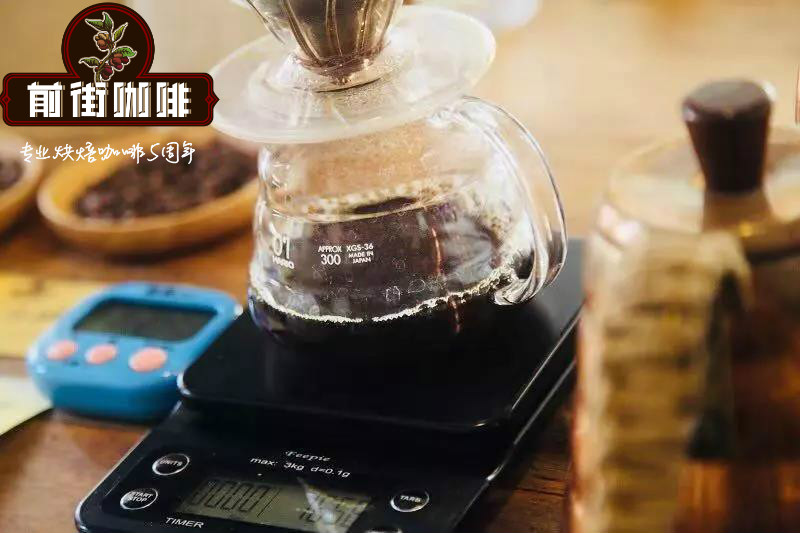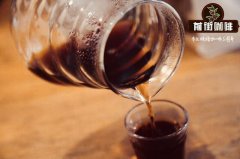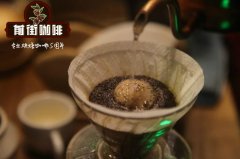Where is the difference in the treatment of yellow honey, red honey and black honey? Why is it called honey treatment?

Professional coffee knowledge exchange more coffee bean information please follow the coffee workshop (Wechat official account cafe_style)
Why is it called honey treatment?
There are three main ways to treat coffee: sun exposure, water washing and honey treatment. The sun drying method is to directly expose the coffee cherries before removing the shell and pectin layer; the water washing method is to screen the coffee pulp before exposure and ferment to remove the pectin layer; the honey treatment law is between the sun method and the water washing method: the pectin layer is directly retained and exposed after the coffee pulp is screened.
Where's the honey?
The word honey treatment makes many people think that coffee is treated with honey, or that coffee tastes as sweet as honey, but in fact it is not either of these two explanations. The meaning of honey treatment comes from the sticky pectin layer of coffee beans before exposure, which feels as sticky as honey; when the coffee pulp is separated from the coffee beans, the outer coated pectin layer is exposed to absorb moisture in the air and make the pectin layer sticky.
Yellow honey, red honey, black honey treatment, where is the difference?
When you want to buy honey-treated coffee, you usually have the choice of yellow honey, red honey and black honey. You may have heard of these honey treatments to retain the percentage of pectin layer, and what does this mean?
Coffee farmers will classify coffee, some will retain less pectin layer so that they can be exposed faster, while others will retain more pectin layer and require longer exposure time. Yellow honey (about 25% of the pectin layer) in order to finish faster during exposure, it must be carried out in the least shaded environment (clouds, shade trees) to get a yellow appearance. Red honey (which retains about 50% of the pectin layer) takes longer and needs some shelter to expose itself. Black honey (which retains about 100% of the pectin layer) is usually covered in order to extend the exposure time.
The characteristics of honey treatment depend on the setting of the pulp scraping machine. The more pulp is retained, the more obvious the characteristics of honey treatment are. However, the production of honey to treat coffee requires a little risk, especially "black honey", because the more flesh is retained, the higher the risk of overfermentation, and the higher the sweetness of coffee beans.
Costa Rica & # 39; in recent years, many better honey treatment methods have been developed. Unlike the traditional washing method, the honey treatment will first remove all the flesh, but will retain the right amount of flesh for fermentation. in addition to effectively reducing the acidity of the coffee, it will also make the coffee itself a taste of ripe fruit sweet, with a richer sweetness in the taste.
Honey treatment can also depend on the amount of pectin retained, which can be subdivided into four treatments: "black honey" with 80% pectin, "red honey" with 60% pectin, "yellow (orange) honey" with 40% pectin, and "white honey" with 20% pectin.
END
Important Notice :
前街咖啡 FrontStreet Coffee has moved to new addredd:
FrontStreet Coffee Address: 315,Donghua East Road,GuangZhou
Tel:020 38364473
- Prev

Which coffee beans are suitable for anaerobic fermentation? Introduction to the process of anaerobic fermentation treatment
Professional coffee knowledge exchange more coffee bean information please follow the coffee workshop (Wechat official account cafe_style)
- Next

The making of a cup of coffee involves harvesting, roasting, storage, grinding, brewing, etc.
Professional coffee knowledge exchange More coffee bean information Please pay attention to coffee workshop (Weixin Official Accounts cafe_style) The production of a cup of coffee includes the processes of harvesting, processing, roasting, storage, grinding, brewing, etc. Among them, processing this step is the key factor affecting coffee flavor. The same beans, depending on the way they are processed, will have a very different flavor.
Related
- What is the meaning of lactic acid fermentation with coffee bean treatment?
- How to judge the state of foam by sound?
- How does the latte pull out the unicorn pattern? Come to get for a little trick to improve the flower pull!
- Will flower pulling affect the taste of the latte?
- Do you know the history of coffee?
- The difference between honey treatment and sun washing what is raisin honey treatment?
- What kind of milk can a novice use to make coffee foam to keep the foam longer? The correct method and skills of milking tutorial sharing
- Why do washed coffee beans taste sour? Flavor characteristics of washed Coffee
- Introduction to the skill of how to practice the size and height of water injection around the circle of hand-brewed coffee
- How do beginners practice coffee flower drawing from scratch?

